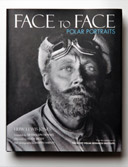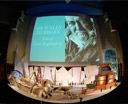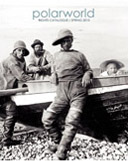 Our ProductsOur Resources |
This website requires the free Flash plugin to be installed.
Polarworld - discover more polar booksThe Arctic Book Review
Michael F. Robinson Reviewed by Russell A. Potter The broader cultural significance of the late-nineteenth and early-twentieth century’s fascination with exploring the polar regions of the earth, were it to be mapped, would disclose blank spaces at least as wide as the chimerical Open Polar Sea. There have been some notable expeditions into this vast territory, among them those of Pierre Berton, Beau Riffenburgh, and Francis Spufford, but great swathes of this frozen terrain remain almost untouched. A large part of the gap is due to the focus on British exploration by most nineteenth-century scholars, which has left the American side of the story largely untold. Michael F, Robinson sets out in this book to remedy this situation, and to a large extent he succeeds, though The Coldest Crucible’s 164 pages (excluding notes) allow only for a broad survey, with occasional patches of greater depth. Like the trans-Arctic expeditions of such figures as Dave Irwin, Robinson’s trek crosses little undiscovered territory, and yet by illuminating the numerous connections between explorers and their public over a crucial period in American history, he brings the whole to light in a way not previously available. When he does stop and make camp, he makes some unexpected and valuable connections, enough to demonstrate that there is far more gold in them thar hills. Robinson’s key thesis is that the popularity of American explorers in this era is significant, not just in and of itself, but more deeply “revealing of the times in which they lived.” These times, which were coeval with the emergence of a mass reading public, a vast expansion of the press, and the rise of a newly robust American middle class, are in this sense a perfect laboratory in which to examine the complex relationship between the discourse of exploration (in a Foucaultian sense) and its subjects, whether their favored means of transportation is the dog-drawn sledge or the armchair. To this end, Robinson presents a series of ‘case studies,’ as it were, which sketch out the shifting relations of the discourse of exploration over the period. The first of these, inevitably, centers on Elisha Kent Kane, who can rightly be credited both as the first American Arctic explorer of note and the first to apprehend the vital role that publicity, and public image played in his success. Robinson provides a strong account of Kane’s rise to that peculiar sort of fame which is greatest at the moment of death; like those of a battlefield general -- yet an officer of peaceful progress – Kane’s elegies sounded a distinctive note of national identity, though one soon overwhelmed by the drumbeats of war. Robinson next turns his attention to Isaac Hayes and Charles Hall, the dueling discoverers of the Arctic’s early entrepreneurial age. Clearly, their rivalry discloses something of the vitality of a certain kind of public image-making, if only because both of them fought for it during a time when so much of the nation’s attention was diverted by war, and publicity so scarce as a result. This leads quite naturally to the next government-sponsored expedition, that of Adolphus Greely. Robinson’s treatment of Greely focuses on the discourse of “manliness,” particularly among men stretched to the extremity of starvation and (quite probably) cannibalism. Greely, thus examined, makes a fine American version of the Franklin myth, though this angle leaves other aspects of his expedition unexamined. One missing factor in Robinson’s examination of the mechanisms of fame and publicity is that of pictorial or visual culture. Although he reproduces some plates from Kane’s books, and a smattering of cartoons from the Peary era, there is little discussion of the many panoramas, dioramas, lantern shows, or graphics in the illustrated press with which a great many Americans – particularly at a time when the national literacy rate was far lower than today’s – imbibed their Arctic imagery. Despite this, Robinson’s analysis of the role of the press in elevating, and then exploiting, the efforts of explorers, remains compelling, and is really the cornerstone of his book. His work is particularly astute in the latter part of this era, when newspapers became involved in directly subsidizing, or even sponsoring, Arctic expeditions, though he only devotes four pages to the Jeanette expedition, which could have benefited from a considerably lengthier treatment. His strongest work comes toward the end, when by comparing the now little-remembered attempt by airship of Walter Wellman with the later endeavor of Peary, he shows that a mechanical failure (Wellman’s dirigible craft literally shook itself to pieces on the launch-pad) is not nearly so grave an impediment as a failure in meeting the image of the dogged, never-say-die explorer. Thus, while he passes perhaps too quickly over some enticing vistas, Robinson casts a fresh light light upon some of the most important blanks on our map of the role of popular sentiment, nationalism, and the rising mass media, in the evolution and valuation of Arctic exploration. He demonstrates a keen eye for significant detail, and a deep engagement with his primary sources, which promise strong work to come. It is to be hoped that he will soon make a second and more extended expedition. |
|
||
follow us  | join us | join us  | home | contact | home | contact
|
||||
|
© Copyright Polarworld Ltd
SiteWizard.co.uk Web Site Design Company |
||||



 The Coldest Crucible: Arctic Exploration and American Culture
The Coldest Crucible: Arctic Exploration and American Culture